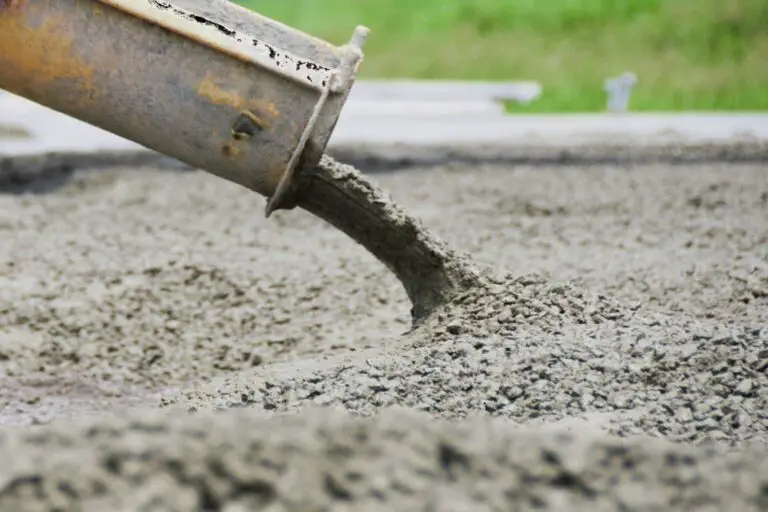Stages of Concrete Making
Concrete production involves different process and stages; the different stages are given in the list below. Which would be discussed in detail in the latter part of the paper.
- Batching
- Mixing
- Transportation
- Placing
- Compacting
- Finishing
- Curing
With different stages being introduced, let’s explain each stage in detail.
-
Batching
It is the process of measuring concrete mix ingredient either by mass or by volume and feeding them to the mixer. The aim of batching is to find the accurate proportion of different components, so that uniform and fine quality. Although the measurements should be as accurate as possible, but there can be some inaccuracies. The tolerance for the measurements in cementitious material is ±1 %, for aggregate it is ±2%, ±1% for water and ±3% for admixtures. The two most common types of batching are:
Volume batching:
Every material is measured by volume; they are expresses in relative ratios. Through this batching, ensuring the quality is a difficult task, and in accuracies occur especially due to issues like bulking of sand. To measure different volumes, such as volume of aggregate, wooden or metallic box is used. A typical volume measuring box has dimensions of 0.3×0.3×0.4m.
Weigh batching
Different materials are weights are measured using various balances. This is a simple and accurate way of batching. Weight of a typical cement bag is 50 kg and its volume is roughly 0.036 m3.
Any of these above two mentioned method of batching can be used. After accurate measurement of quantities, now is the time to feed the material into the mixers. There is a specific feeding sequence which needs to be followed. The sequence is shown below.
- 25% water
- 50 % coarse aggregate
- 50 % fine aggregate
- 100 % cement
- 50 % coarse aggregate
- 50 % fine aggregate
- 75 % water
Mixing:
For small works the mixing is carried manually through hand mixing. This mixing is inferior one as compared to the mixing carried out by machines i.e. concrete mixers. The purpose of mixing is to achieve a uniform concrete mixture. The quality of concrete is determined by the shape and angle of mixing blades, rotation speed, horsepower etc. Mixing time also determines the quality of concrete, every mixer has its own specific time of mixing.
Various methods of concrete mixing are used, some of those are given below.
- Hand mixing
This type of mixing is carried out in the case of small jobs. The mixing of different components of concrete are mixed manually without the aid of a mixer machine. Special care and effort is required to achieve the uniformity of concrete which is a difficult task. In the case of hand mixing 10% extra cement is added. This method of concrete mixing is the cheapest among all methods. The picture below shows hand mixing of concrete on site.
- Machine mixing
Machine is used to mix different ingredients of concrete. It is an effective and fast way of concrete mixing with enhanced homogeneity and quality of concrete. This method requires less time and effort. This is mostly suitable for medium size projects, where manually concrete making is not possible. A typical mixing machine uses a revolving drum for the mixing of concrete.
- Ready mix concrete
Ready mix concrete is also termed as pre-mixed concrete. There are in general two categories of ready mix concrete. The first category where, mixing is done at the centralized plant and then it is transported off to the construction site. The concrete is transported in trucks (agitator truck) that rotates slowly in order to prevent the segregation and hardening of the concrete. This is also known as central mixed concrete. Whereas in the other category, the batching is carried out in the central plant but the mixing is carried out in the mixer truck. This is known as truck mix concrete or transit mixed concrete. They allow longer haul and they are suitable for project that might have some delays. In the second category, three quarters of the capacity of truck is used as compared to pre-mixed concrete. In some case, concrete is partially mixed at the central plant and partial mixing is carried out in the mixing truck. The capacity of truck is around 6 to 7.5 metric cube. (8)
The concrete made through ready mix process is of better quality. This method is applied at placed where there is less or no space for mixing plant at the construction site. The batching and mixing of concrete is carried out in a central batching plant, so there is better control on quality of concrete. Ready mix concreting method is used where large volume of concrete is required each day.
So concrete is made and delivered to the site through various ways. When fresh concrete is delivered to the site, its quality is checked. Additional water can also be added to the concrete. It should be added such that the w/c ratio should not exceed the limit, the mixing and agitating tie should not exceed, the slump measure should be less than the amount specified. Concrete is remixed at a minimum rotating speed of 30 rev/min until uniformity of concrete is achieved.

